In this article: Learn how to attract hummingbirds to your garden and yard with these 7 tips!
Hummingbirds are highly desirable backyard birds. No matter how many times you see one it is a thrill to watch these tiny birds flit around and drink from flowers and feeders.
This site contains affiliate links. If you make a purchase using one of these links, I may earn a commission. Please see my disclosure page for more information about cookies collected and our privacy policy.
My whole life I have loved these tiny birds, maybe because I’m also a lover of all things fairy- and they just remind me of them!
It’s a common misconception that just hanging a hummingbird feeder in your yard will attract flocks of hummingbirds. There’s actually a lot more that goes into getting hummingbirds to visit YOUR feeder, but luckily it’s not too hard!
With the right steps you can attract more hummingbirds to your yard and to your hummingbird feeders, so you can enjoy the magic of these beautiful birds!
How to Attract Hummingbirds to Your Yard and Feeders
There are many different things you can do to encourage more hummingbirds to visit your yard. Below are 7 ways to attract more hummingbirds and encourage them to visit your feeders more often.
Plant Lots of Flowers
The best, and easiest, way to attract hummingbirds is to plant their favorite nectar-producing flowers and plants. This gives them a natural food source that doesn’t depend on you remembering to fill a feeder.
These plants are usually bright colors (hummingbirds especially love red flowers) and many have long, tubular blossoms.
Some flowers that attract hummingbirds are the trumpet vine, trumpet honeysuckle, bee balm, hollyhock, zinnia, and sage.
Tips for Planting Flowers to Attract Hummingbirds:
Plant native plants. Planting plants that are native to your area (region or country) will help bring in insects and flavors that the hummingbirds in your area thrive on.
Choose plants with different bloom times. This will ensure that you will have blossoms and nectar for your hummingbirds all season long.
Variety, variety, variety! Choose flowers and shrubs in different colors, shapes, heights to give the hummingbirds more variety to choose from.
Plant a mix of perennials and annuals. Annuals are often more showy and have a longer bloom time, but perennials won’t have to be planted each year.
Remove the old blossoms. Deadheading your flowers is the best way to keep them blooming as long as possible.
Offer A Few Hummingbird Feeders
Hanging hummingbird feeders around your yard is a great way to attract hummingbirds!
Hang your feeders in a low activity area that is near the flowers you planted for them.
Fill your feeders with a homemade hummingbird nectar.
Homemade nectar is easy to make and is basically just sugar water. Use this Hummingbird Nectar Recipe for the correct ratio of sugar to water (remember no honey or artificial sweeteners!)
Tips on Feeding Hummingbirds with Nectar Feeders:
Hang multiple feeders. More feeders equals more hummingbirds. Plus hummingbirds can sometimes be territorial, so by offering more than one feeder you can be sure that some birds won’t get chased away.
Hang a variety of feeders. Different hummingbirds may have a preferred feeders style. Choose a variety of types to cater to their preferences.
If you observe your feeders over time you should be able to figure out which feeders are more popular in your yard and using more of the preferred style will attract more hummingbirds.
Choose a good location. Choose an area near your hummingbird flowers and near shelter or tree cover where your hummingbirds will roost or perch.
It’s best to keep the nectar out of direct sunlight, but some sun can help make the red of the feeder sparkle and attract hummingbirds to them.
Don’t use red dye in your nectar. This can be harmful to hummingbirds and since most feeders have red elements, dye is unnecessary.
Keep your feeders fresh and full. Clean out and refresh you nectar at least once a week and keep them full so the hummingbirds can rely on you as a food source.
Prevent insects from invading your feeder. Ants, wasps, and bees can become a problem in some hummingbird feeders. Regular cleaning and buying feeders that prevent pests can help.
Luckily there are things to do to keep them out. Check out my article on 10 Ways to Keep Ants Out of Your Hummingbird Feeder for more information.
Attract More Insects
Many people believe that hummingbirds only source of food is nectar, but this is untrue. Hummingbirds actually feed on insects and spiders as a source of protein.
When planning your yard keep this in mind. Usually simply planting your garden and not killing this food source is enough to keep enough bugs around to satisfy the hummingbird’s appetite.
That means leave those spider webs alone!
Provide Water
Unlike many other birds, hummingbirds won’t usually use a bird bath to bathe in.
Another way to help attract hummingbirds is to provide a source of running water. This can be in the form of a mister or small fountain.
Provide Shelter
Hummingbirds will be naturally drawn to areas that give them shelter. Even better if you have an area for them to build their nests.
Arrange your hummingbird garden around shrubs and trees to give them a place to rest and perch (and hide).
Hummingbirds also make their nests in dense shrubs and deciduous trees- so make sure you have some around!
Add More Red (or Orange and Yellow)
If you have red flowers and red hummingbird feeders you may already have enough color to attract hummingbirds.
But if you plant to have some yard ornaments or decor, place some red ones in the garden!
Some ideas for red garden decor:
- Red Gazing Globes
- Red wind spinners
- Red furniture
- A Red birdbath
Don’t Use Pesticides
As noted above the bulk of a hummingbird’s diet is actually insects. If you use pesticides in your yard and garden these insects will die. Without this important food source, you will have a hard time attracting hummingbirds to your yard and garden.
And an interesting fact: hummingbirds use silk from spider webs to construct their nests!
Just another reason to leave the bugs and spiders alone!
By following these 7 steps you will be able to attract hummingbirds to your yard, garden, or anywhere you wish!
Do you have a tip to add to the list? I’d love to hear about your experiences on how to attract hummingbirds!

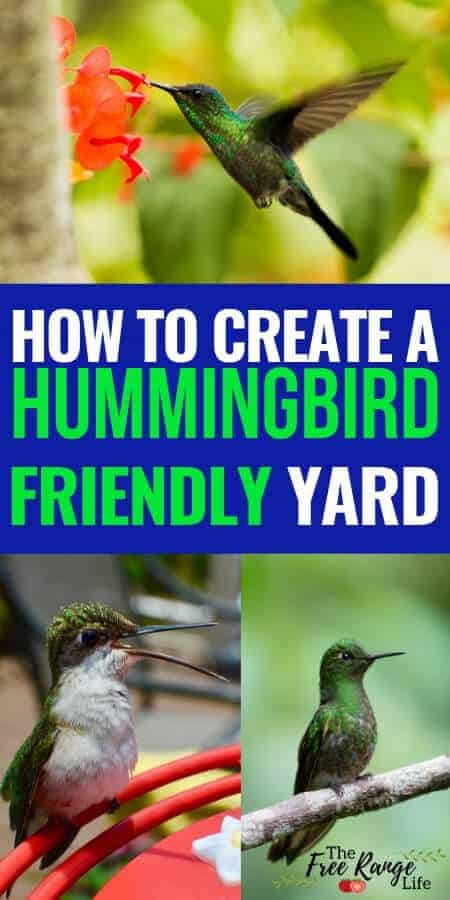
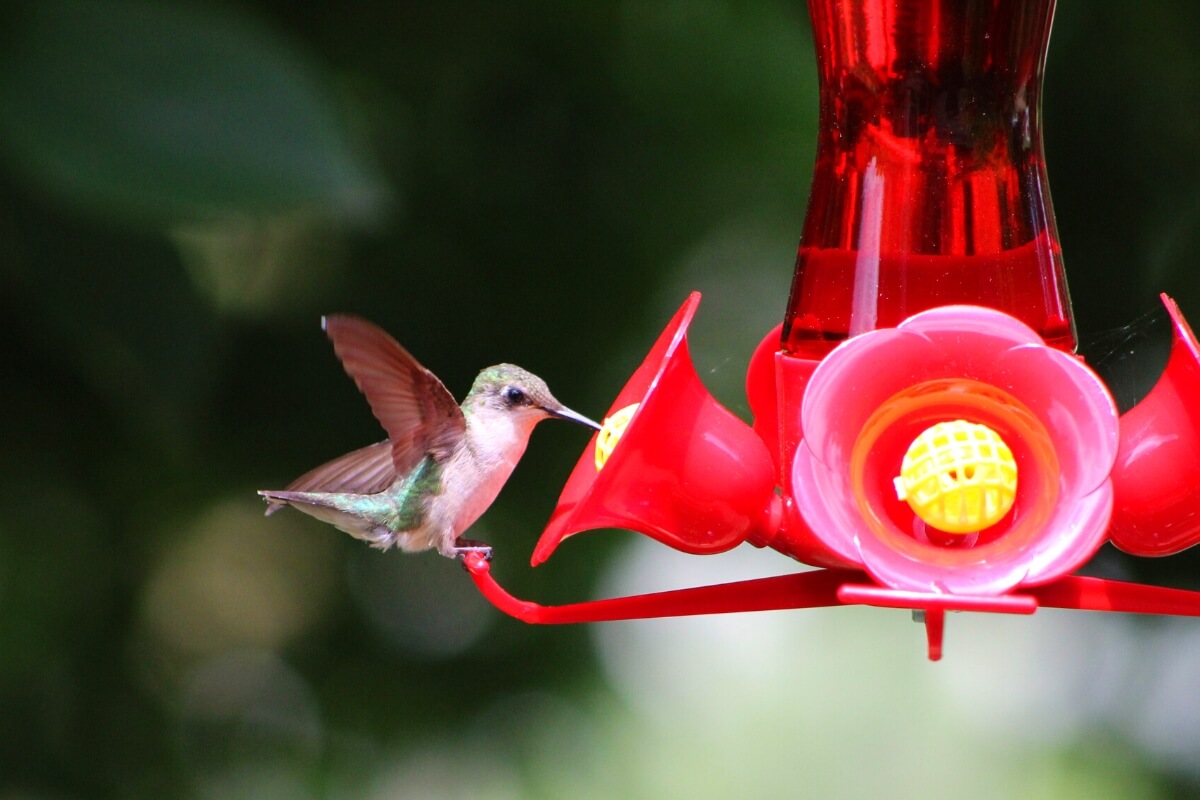
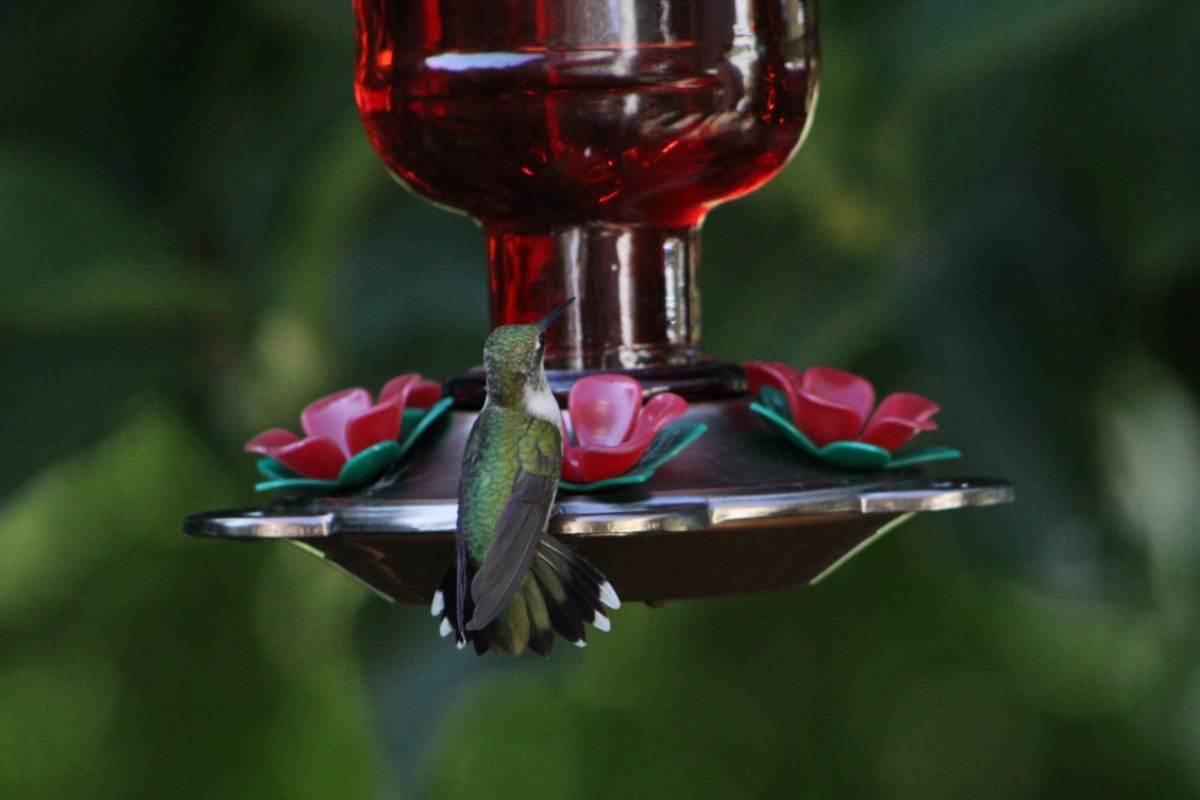
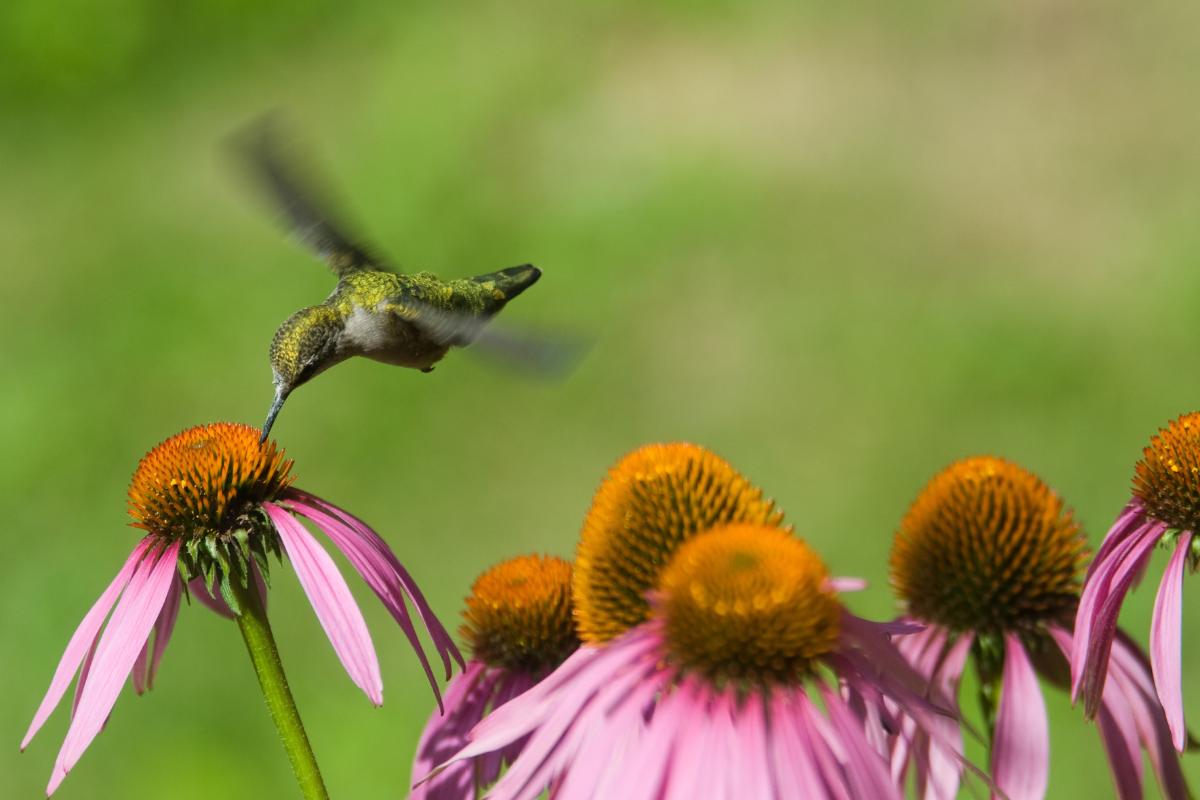
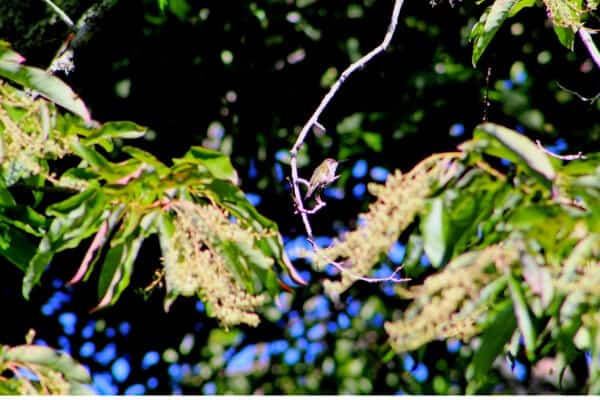
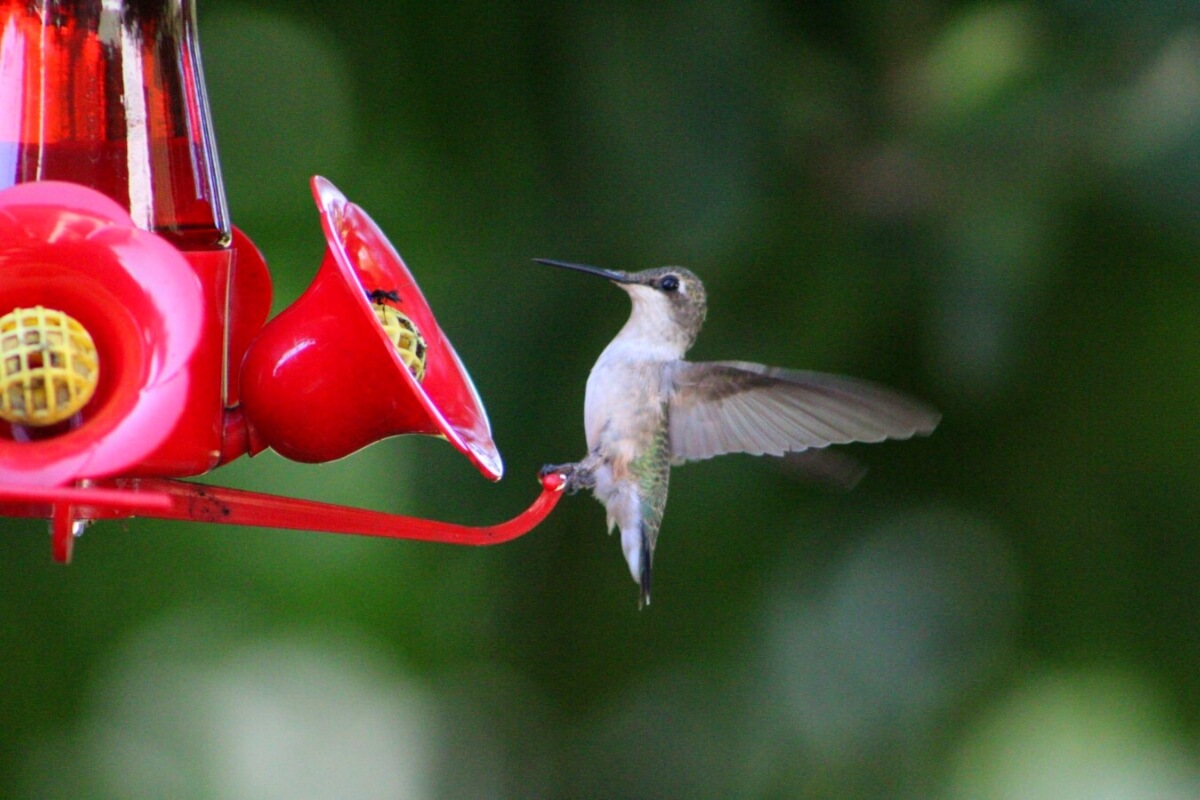
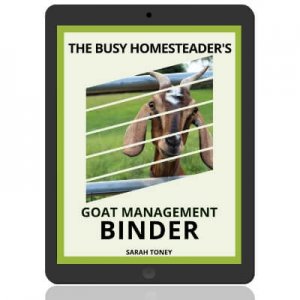
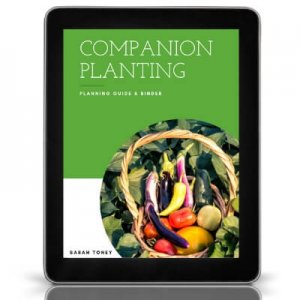
My first year to have a feeder! I am sight impaired and I have it on the side of my front porch so I can sit and watch! I bought a candy corn vine too, and they love it! I have found a new found love for my retirement! Thank you for all your information!
Is there some kind of birdhouse you can build for hummingbirds?
We have red hanging baskets , lots of red, orange and yellow flowers , lots of trees for cover and nest building , we love watching these tiny little fairy like birds, there are magical
We have lots of red hanging baskets, red , orange and yellow flowers. Lots of trees for cover , a bird bath , we love watching the these magical creatures, flit around in and of the trees, drinking our nectar. We do have a fair amount of spiders around our yard , they are great at eating the bugs.
We are just beginners. I’m so excited to get it started!
Loved your suggestions but cleaning the feeders is VERY important and should be done daily on hot days, the sugar water will go rancid and that will KILL these tiny birds. Wash in gentle warm water. Some of my best attracting feeders are saucer style and glass globe. If you can’t commit to cleaning feeders and filling daily in hot summer then please just plant flowers because it is a serious thing.
Thanks for the suggestions!